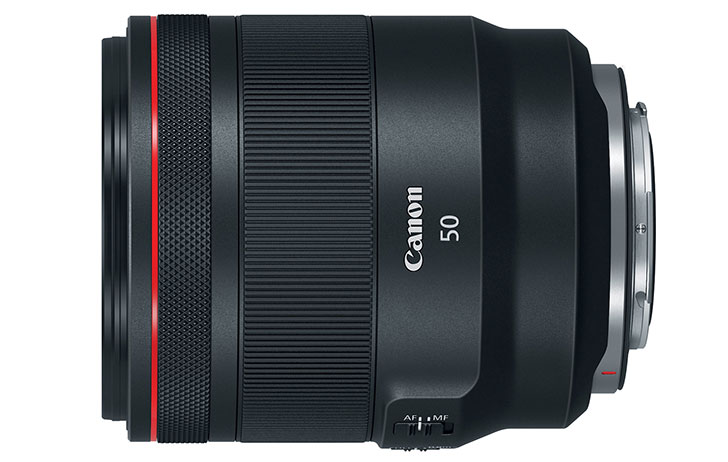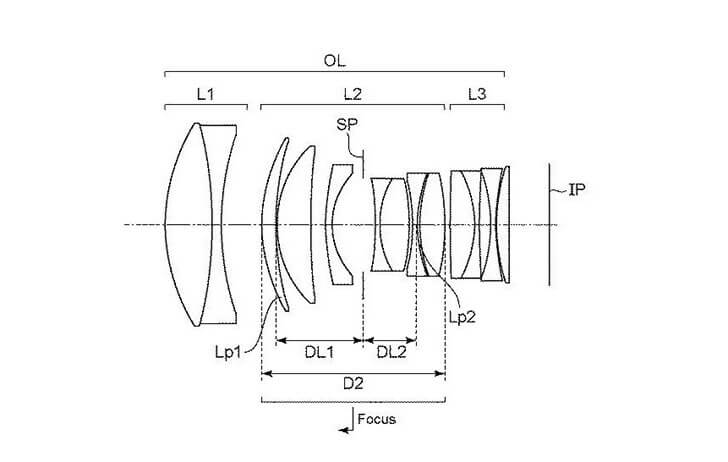Big, heavy, expensive, limited. Waste of Canon's resources. Perhaps they might sell a dozen or so ...
Upvote
0

Canon RF 24mm f/1.2L & RF 85mm f/1.2L in the works [CR1]
We're told that beyond new f/2.8 RF zoom lenses, that Canon is working on two new L prime lenses, an RF 24mm f/1.2L USM and an RF 85mm f/1.2L for release in lwww.canonrumors.com

Patent: Canon RF 135mm f/1.4L USM
Well here's a fun optical formula from Canon discovered by Canon News, a Canon RF 135mm f/1.4L USM. The Canon EF 135mm f/2L USM is an all-time classic, and twww.canonrumors.com
I demand a 70-200 f/2L with dual card slots.
Hahhaha. Brilliant. Thanks for a good laugh.Big, heavy, expensive, limited. Waste of Canon's resources. Perhaps they might sell a dozen or so ...
That's what a good CR1 rumor can do.Hahhaha. Brilliant. Thanks for a good laugh.
With IBS, f2 would be the way to go. But $$$$
TWO card slots?
What a joke.
If the image wasn't saved on at least THREE cards simultaneously it obviously wasn't worth taking in the first place.
I'm a REAL professional, and would never insult my customer and fail them by putting their images at risk on a mere TWO card slots.
I REFUSE to by any new lens if it's not AT LEAST three slots.
This is why pros don't take Canon seriously.
Big, heavy, expensive, limited. Waste of Canon's resources. Perhaps they might sell a dozen or so ...
I REFUSE to by any new lens if it's not AT LEAST three slots.
For me the big problem with an f/2 trinity is... what is the point?
In the old days, an f/2.8 trinity made sense as at least they could all be autofocused using all focus points, but that's not a worry any more. Aperture could be literally anything nowadays.
at least an f/2.8 used to be equally bright in the viewfinder, but again that's no longer a worry. With the electronic viewfinder, aperture could again be literally anything.
There's no reason to make a set to have some sort of "complementary look" because f/2 at these small apertures may have so much DOF it might as well be f/16. To really get the bokeh of 70/2, you need a 35mm aperture, which would be 50/1.4, 35/1, 35/0.7, or 17.5/0.5.
And there's no requirement to all be f/2 to be usable under a given shooting condition, because the reciprocal rule lets you hand-hold FAR longer at extreme wide-angles. You'd get the hand-holdability of 70/2 with 35/2.8 or 17.5/4. And they also reduce subject motion linearly.
And they're not similar in weight and control placement to the point that you'd have any benefit to the lenses "feeling" the same.
If there's any benefit to different zooms having the same maximum f-stop I'm sorry but I'm just not seeing it.
I think the main reason to do a 14-28/2.0 is simply because they could probably give you an f/2.0 zoom without using much glass, so it'd be relatively small and cheap compared to the 28-70/2.0 or a hypothetical 70-135/2.0.
Shooting at ISO 1600 and not 3200 is the point. Amongst others.For me the big problem with an f/2 trinity is... what is the point?
In the old days, an f/2.8 trinity made sense as at least they could all be autofocused using all focus points, but that's not a worry any more. Aperture could be literally anything nowadays.
at least an f/2.8 used to be equally bright in the viewfinder, but again that's no longer a worry. With the electronic viewfinder, aperture could again be literally anything.
There's no reason to make a set to have some sort of "complementary look" because f/2 at these small apertures may have so much DOF it might as well be f/16. To really get the bokeh of 70/2, you need a 35mm aperture, which would be 50/1.4, 35/1, 35/0.7, or 17.5/0.5.
And there's no requirement to all be f/2 to be usable under a given shooting condition, because the reciprocal rule lets you hand-hold FAR longer at extreme wide-angles. You'd get the hand-holdability of 70/2 with 35/2.8 or 17.5/4. And they also reduce subject motion linearly.
And they're not similar in weight and control placement to the point that you'd have any benefit to the lenses "feeling" the same.
If there's any benefit to different zooms having the same maximum f-stop I'm sorry but I'm just not seeing it.
I think the main reason to do a 14-28/2.0 is simply because they could probably give you an f/2.0 zoom without using much glass, so it'd be relatively small and cheap compared to the 28-70/2.0 or a hypothetical 70-135/2.0.
Just playing devils advocate here ...Shooting at ISO 1600 and not 3200 is the point. Amongst others.
Thanks !
The 135mm looks promising.
But I bet the 24mm turned into the 35mm f/1.2, at least for the moment.
What matters isn't that it is common for the average photographer or not. What matters is whether or not a large enough number of people would rather shoot at a faster shutter speed in the same amount of light at f/2 vs f/2.8 to make it a profitable product.Thanks for the answer, instead of just attacking me for asking the question.
I'm trying to think though, even in candlelight I can shoot a 35/1.4 wide open 1/15th on 1600 film (and did so 1000s of times). At 14-15mm, you wouldn't even need IS to be on to obey the reciprocal rule.
At 3200, you'd be at 1/2 a candle.
With IS of say 2-4 stops, you'd be at 1/8th to 1/32nd of a candle.
I agree there must be somebody somewhere who would rather take a shot in 1/32nd candlelight at 1600 instead of 3200, but would you at least agree that this isn't going to be a common type of photography? If this is an actual drive for sales I'm happy to believe it. I just want to clarify that you're saying this is important enough that f/2 be offered, and indeed the reason perhaps most worth mentioning as it's the only one you mention?
What are the "amongst others?" Again happy to hear you out and learn something. To be clear I don't see the purpose of it, but I'm not saying there's no purpose. I'm just asking what the purpose is (besides the reason you've already kindly given).
I am not the attacking type!Thanks for the answer, instead of just attacking me for asking the question.
I'm trying to think though, even in candlelight I can shoot a 35/1.4 wide open 1/15th on 1600 film (and did so 1000s of times). At 14-15mm, you wouldn't even need IS to be on to obey the reciprocal rule.
At 3200, you'd be at 1/2 a candle.
With IS of say 2-4 stops, you'd be at 1/8th to 1/32nd of a candle.
I agree there must be somebody somewhere who would rather take a shot in 1/32nd candlelight at 1600 instead of 3200, but would you at least agree that this isn't going to be a common type of photography? If this is an actual drive for sales I'm happy to believe it. I just want to clarify that you're saying this is important enough that f/2 be offered, and indeed the reason perhaps most worth mentioning as it's the only one you mention?
What are the "amongst others?" Again happy to hear you out and learn something. To be clear I don't see the purpose of it, but I'm not saying there's no purpose. I'm just asking what the purpose is (besides the reason you've already kindly given).
